Sunday, September 12, 1999
After a late but opulent breakfast we went to Lake Powell. Before we crossed the bridge at the Glen Canyon Dam, we stopped at a viewpoint that offered a great view of the Colorado River – more than 600 ft below!

After a brief visit of the Glen Canyon National Recreation Area we went back to Page to take a jeep tour to Antelope Canyon in the afternoon. We left at around 3 pm.
To reach the canyon, you have to drive through a wash which is below the canyon. Mike, our driver, told us that sometimes the water comes through the canyon so fast you barely have time to climb out of the wash. And you wouldn’t want to be caught by a flash flood while in the canyon or the wash.
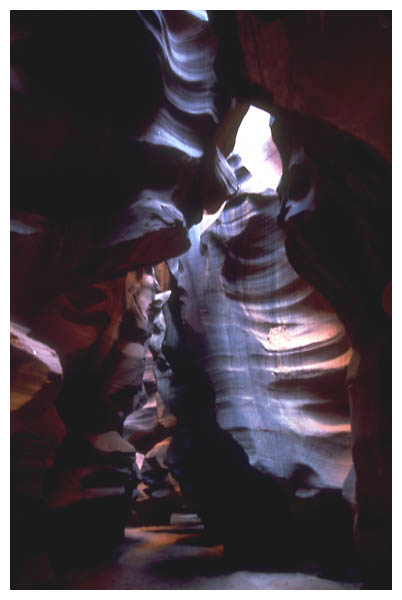
Here’s a look into the Antelope Canyon, which is also called “Corkscrew Canyon” – now you know why! Sorry the picture is a little dark, but it was after noon, and the sun didn’t reach the canyon floor any more. We were told that the light is much better at noon, when the sun is above the canyon.
Inside, there are beautiful rocks. We saw picture postcards of the canyon before we went, and I thought there must be some kind of trick because the rocks looked almost unreal. So many different forms, curves and colors! The rocks range from a pale, creamy white over yellow and orange to deep reds and purples. This is the best picture we got:
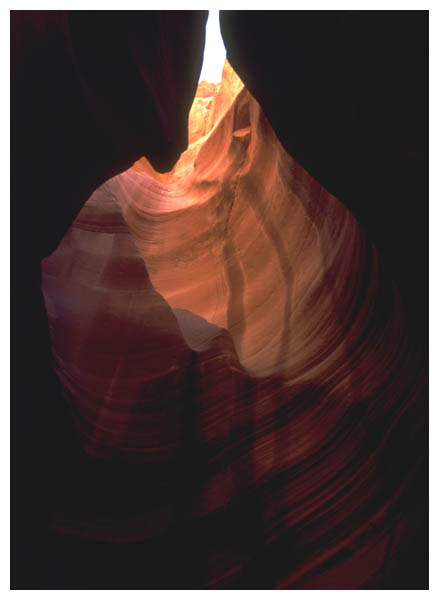
But it much, much more beautiful in reality! If you ever get the chance, go visit Antelope Canyon and have a look yourself!
(Other sites with great photos of Antelope Canyon: Nature Photography by Phyris Tobler, Photodude)
We walked through the canyon and got out on the other side, where it was sunny and hot once again. Inside the canyon, it’s nice and cool, very refreshing on a hot day. The floor of the canyon is soft and consists of sand, its height varies greatly because slower floods will deposit more sand on the floor while faster and heavier floods tend to wash the sand away.
Afterwards, we went back to the Glen Canyon NRA once more. In Lone Rock, we parked the car and went down to the shoreline to dip our toes into the water at the marina.
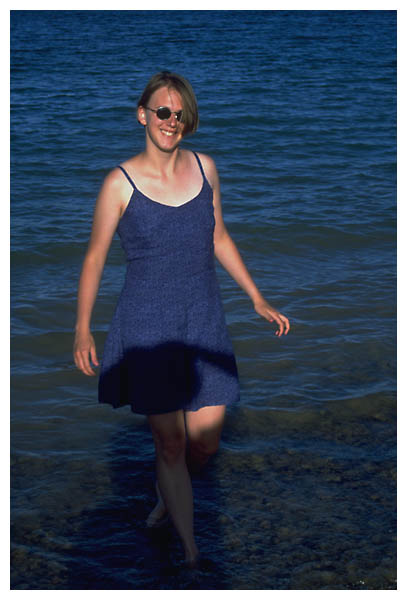
Lake Powell is beautiful, but looking at the dam makes you think about what Glen Canyon must have been like before the dam was built. I read (Edward Abbey: Desert Solitaire, Chapter “Down the River”) it was just as impressing and beautiful as Grand Canyon. How can you decide to sacrifice something like this for a little electricity?
Besides, Glen Canyon Dam is built into sandstone which is known to erode quickly. A few years ago, there was a flood in spring that filled Lake Powell to the top. They even had to put up walls on the dam to keep the lake from overflowing. It was impossible to let out water as fast as it was flowing in. At one point, the water beyond the dam turned red – it had eaten through the concrete tunnels and was now eroding the sandstone in which the dam was built. There was immidiate danger that the dam would be destroyed.
Even now, it is impossible to say how long it will take the water to eat around the dam. And what will happen then?
The problem is, if it is decided to empty Lake Powell, it will take about 20 years until all the water is let out. If it is done more quickly, or if the dam breaks, there will be an enormous flash flood that will surely destroy everything in its way – for example, Grand Canyon. And what will Glen Canyon look like? I don’t believe wildlife can be restored to what it was.
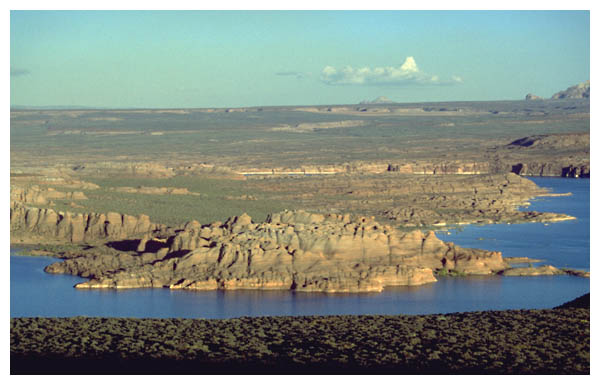
On the way back to Page, we stopped at a viewpoint above the marina to watch the sun set. The clouds were beautiful, too, but not as wildly colored as yesterday.
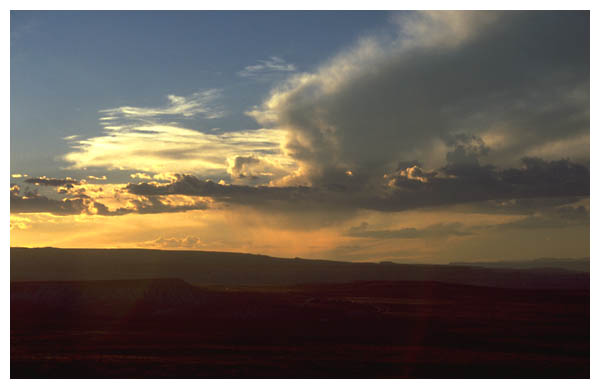
Previous | Next
Index | Camera | Map
1 | 2 | 3 | 4 | 5 | 6 | 7 | 8 | 9 | 10 | 11 | 12 | 13 | 14 | 15 | 16 | 17 | 18 | 19 | 20 | 21 | 22 | 23 | 24 | 25 | 26 | 27 | 28 | 29 | 30

I would recomend Marc Reisner’s Cadillac Desert. It’s a great book about the water development of the American West. He discusses many issues surrounding the massive dams you visited, and those of the pacific northwest, and he tells the story of how Los Angeles acquired water for the thousands of people now living there at the expense of others.
Check it out if you’re interested!
Thanks!
I guess I’ll have a look at the book.
Have you read Desert Solitaire – a season in the wilderness by Edward Abbey? He was a ranger at Arches NP in the late fifties and has taken a boat trip on the Colorado in Glen Canyon just before the dam was built. His opinions may be a bit extreme, but I agree with them in general.